

La Libertad Park
Photos from 2011
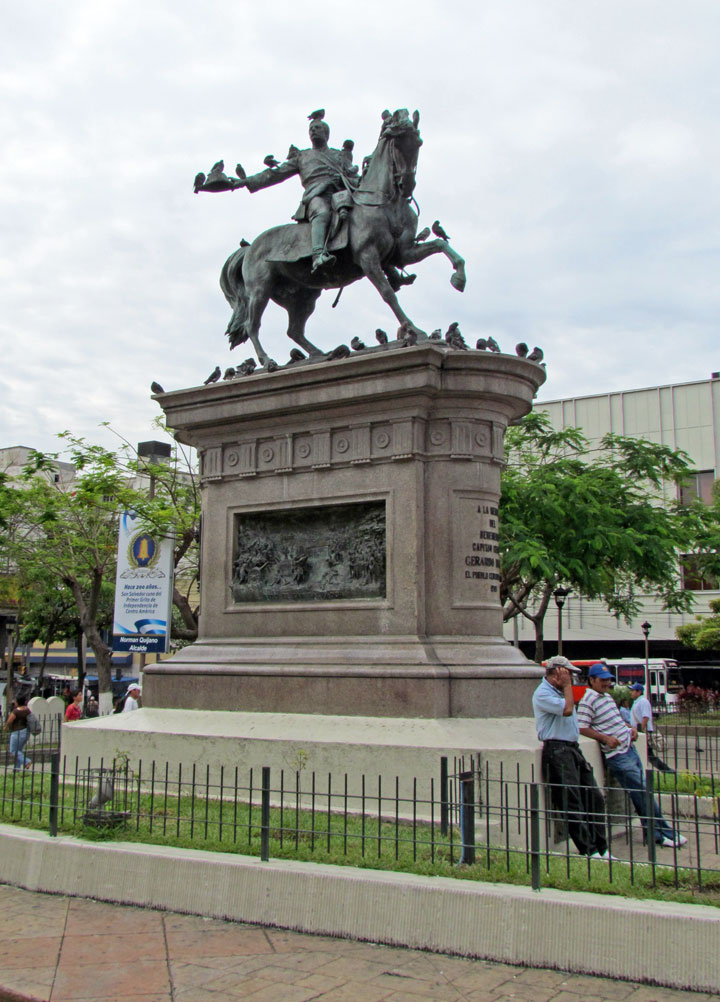
The City of San Salvador is the capital and largest city of El Salvador. Its complete name is La Ciudad de Gran San Salvador (The City of the Great Holy Savior). It lies upon a seismic valley in northern Central America, surrounded with volcanoes and prone to earthquakes, which is why the Pipil and the Spaniards called the area in which the city is now settled "El Valle de las Hamacas" (The Valley of the Hammocks) "Salcoatitan" in Pipil language, due to its constant seismic activity. Its city proper has the third largest population in Central America after Guatemala City and Managua. However, Greater San Salvador is the second most populated metropolitan area in Central America after Greater Guatemala City. Home to one-half of El Salvador's wealth, the city's per capita GDP - PPP is approximately USD 11,200, compared to a national average of USD 5,260 (2002). The city has a long history, with origins dating back to the Spanish conquest of the Pipil city of Cuzcatlán which means "The Place of the Diamond Jewels". The name of the city San Salvador means "Holy Savior" in Spanish. People of San Salvador are called Capitalinos. The city is seen as a phoenix bird that in different forms it has risen triumph from its ashes due to the city's seismic volcanic location and the civil wars it has survived.
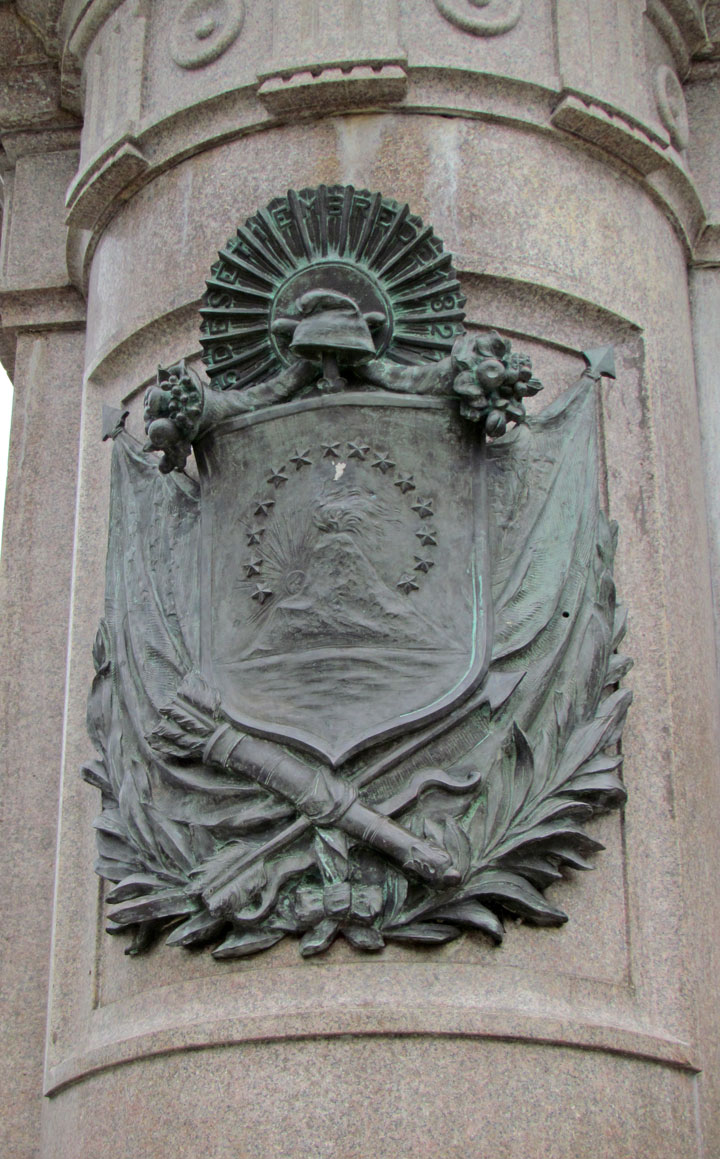
The origins of the city can be traced to before the Spanish Conquest. It is near
the present location of San Salvador that the Pipil peoples established their
capital, Cuzcatlán. Not much is known about this city, as it was abandoned by
its inhabitants in an effort to avoid Spanish rule.
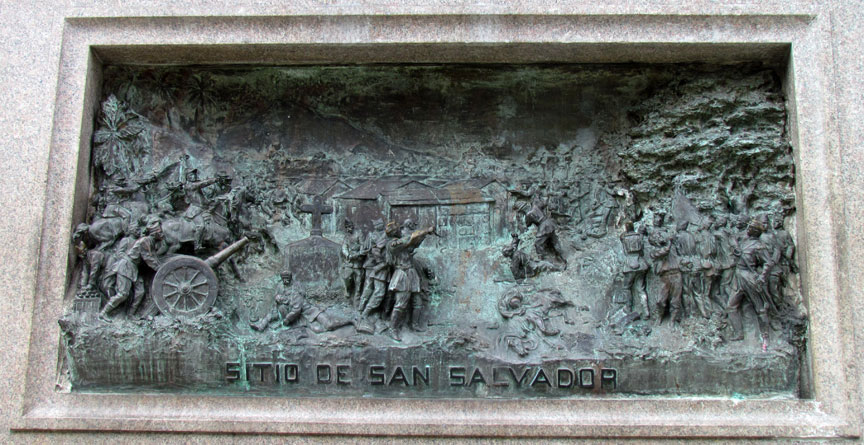
Under the orders of Pedro de Alvarado, Gonzalo de Alvarado and Diego de Holguín
were ordered to take the settlement they found and develop it. Diego de Holguín
became the first mayor of San Salvador after the town was founded on April 1,
1525. However, it was rebuilt and changed locations twice in 1528 and 1545.
Originally founded in what is now the archaeological site Ciudad Vieja, north of
the present-day city, it was moved to the Valle de Las Hamacas or the Acelhuate
Valley, named so due to the intense seismic activity that characterizes it. The
new site was chosen as it had more space and more fertile land, thanks to the
pristine (now polluted) Acelhuate River. As the population of the country
remained relatively small until the early twentieth century, the city grew very
slowly.
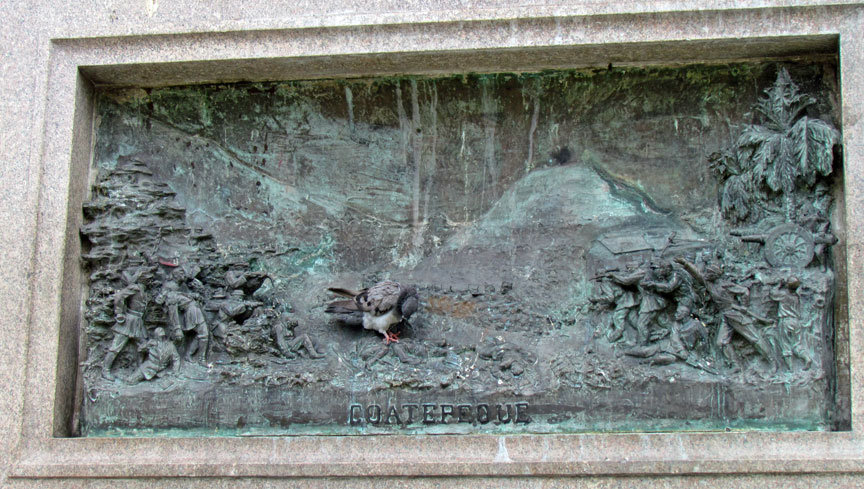
During the presidency of Dr. Rafael Zaldivar on January 1885, businessmen and
the president's family built the Sara Zaldivar Asylum for Indigents and the
Elderly.
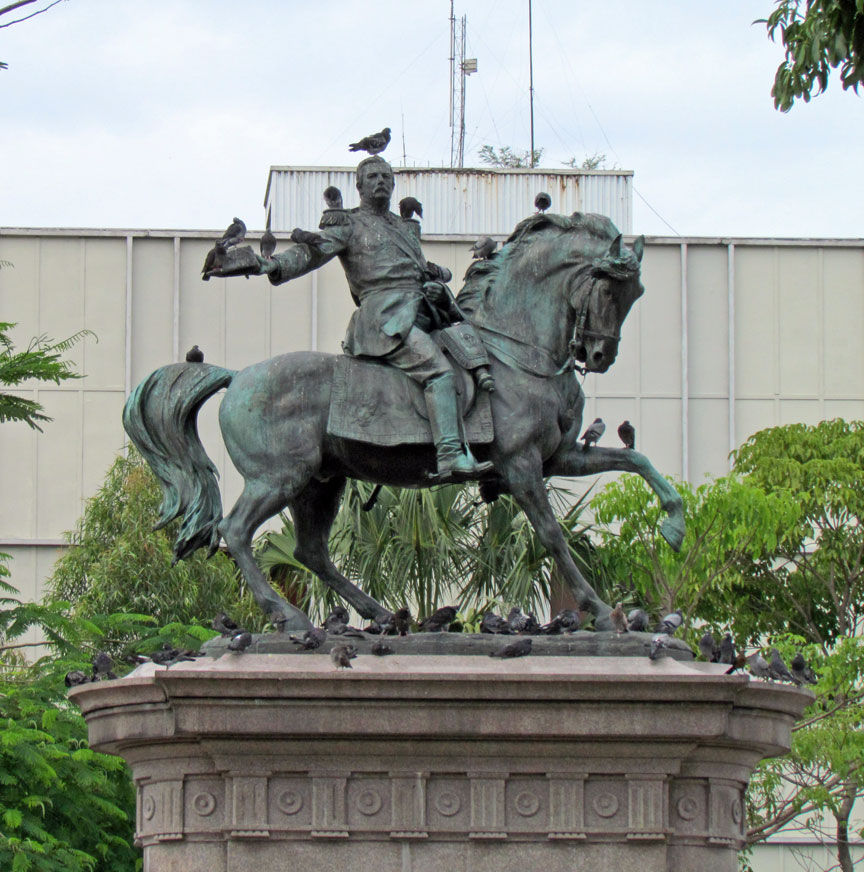
In 1902, Hospital Rosales was built, named after its benefactor, Dr. Jose
Rosales, a banker who gave his fortune to the hospital and to the orphanage. The
hospital's construction was began by president Carlos Ezeta and finished during
the presidency of Tomás Regalado.
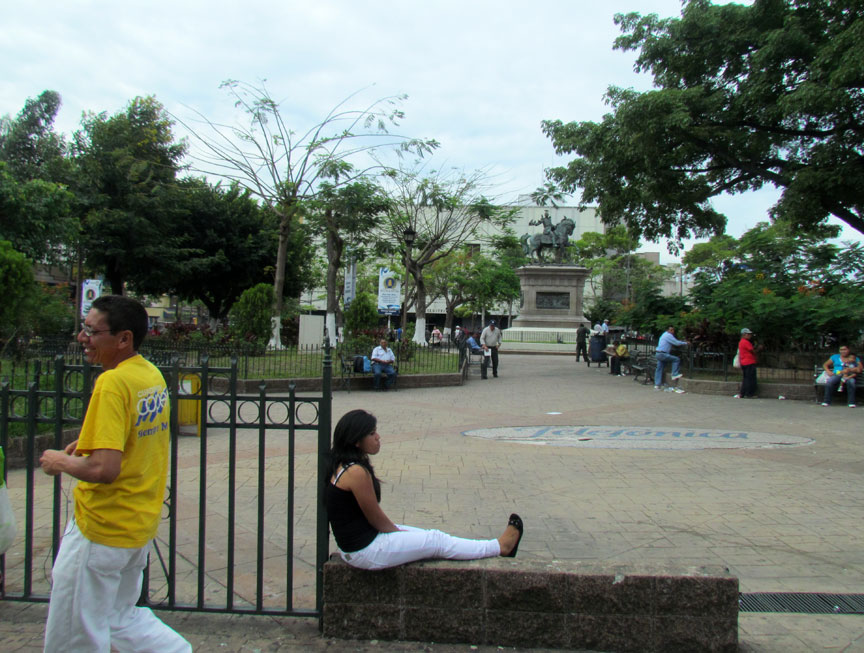
In 1905 president Pedro José Escalón began construction of the National Palace,
funded by coffee exportation taxes.
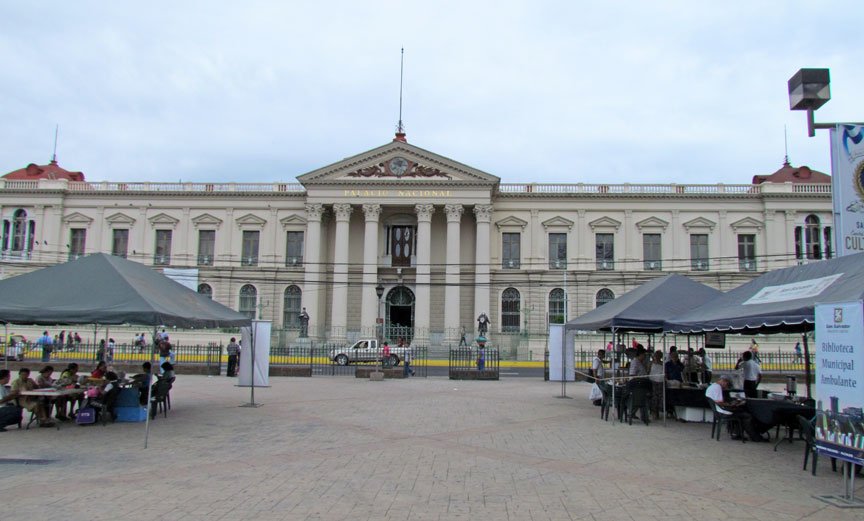
National Palace
In 1911, the Monumento a los Próceres de 1811 in Plaza Libertad and the Teatro Nacional were built during Dr. Manuel Enrique Araujo's presidency.
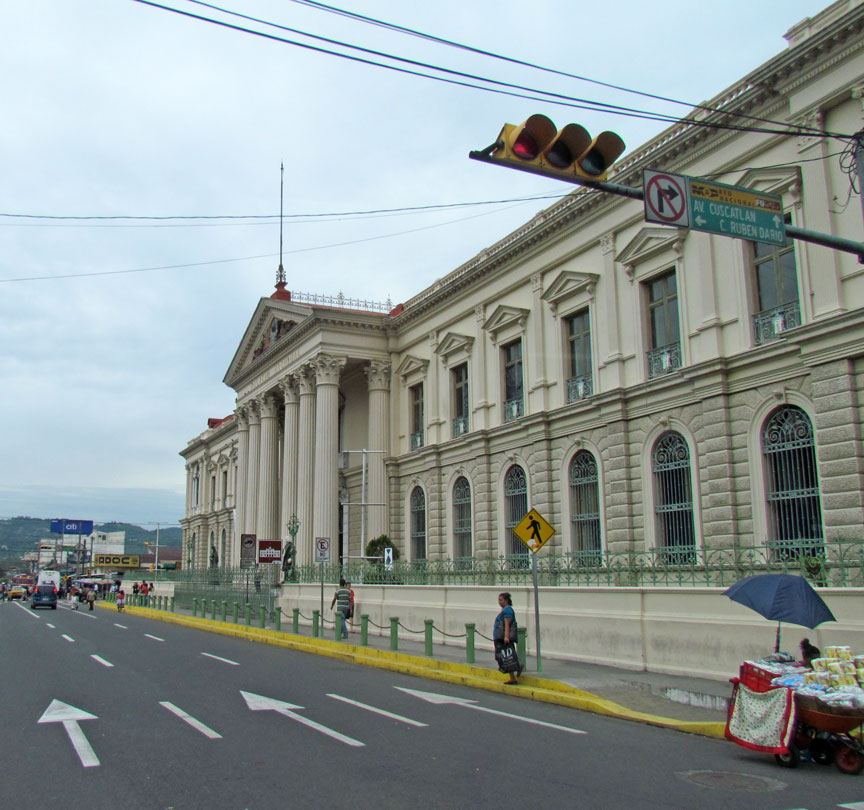
In 1917, an earthquake damaged the capital during the Carlos Melendez
presidency.
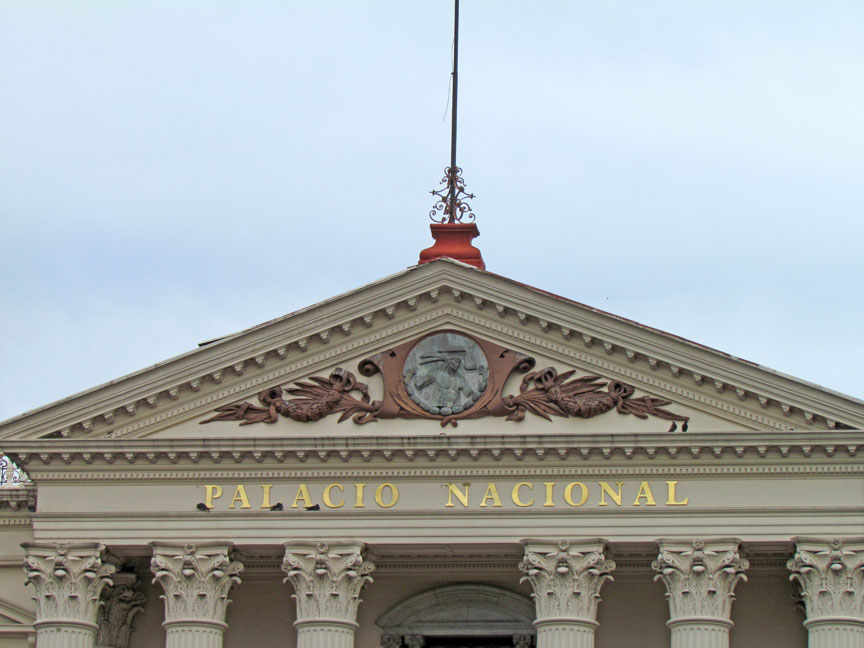
On December 2, 1931, after a coup d'état, president Arturo Araujo was ousted by
the military and replaced by a military directorate. The directorate named then
vice-president Maximiliano Hernández Martínez as president and Araujo went into
exile. The Martínez regime lasted from December 4, 1931 to May 6, 1944.

In 1964, the Christian Democratic Party (PDC) candidate, José Napoleon Duarte,
an engineer, was elected mayor. Duarte was Mayor of San Salvador from 1964 to
1970. During his term as mayor he built the Pancho Lara park in the Vista
Hermosa neighborhood, renewed the electricity system, and began a system of
adult education schools.
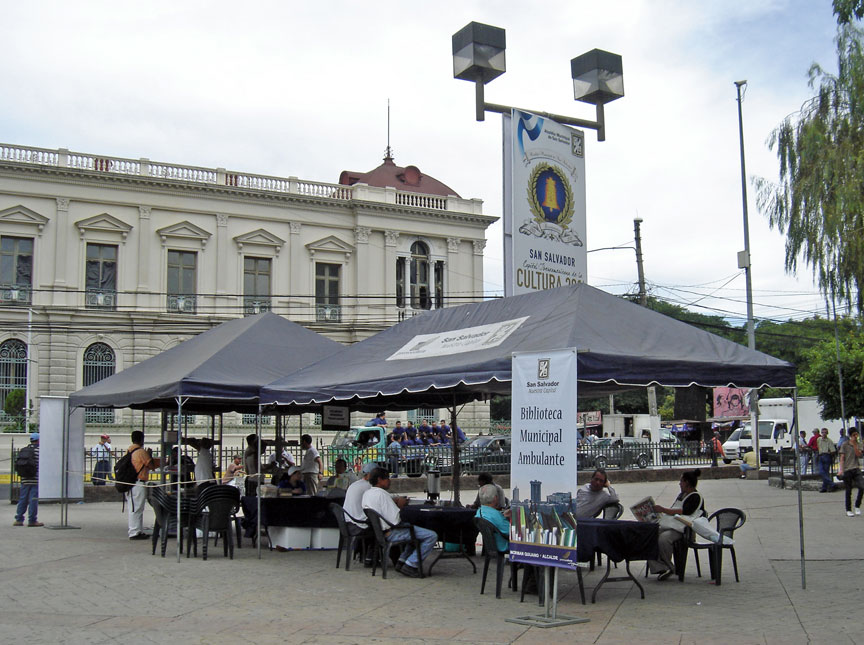
In 1969, celebrations in the Cuscatlán stadium were held in honor of the
returning troops from the football war with Honduras. Boulevard de los Héroes
(Boulevard of the Heroes) was named after the Salvadoran soldiers who fought in
Honduras.
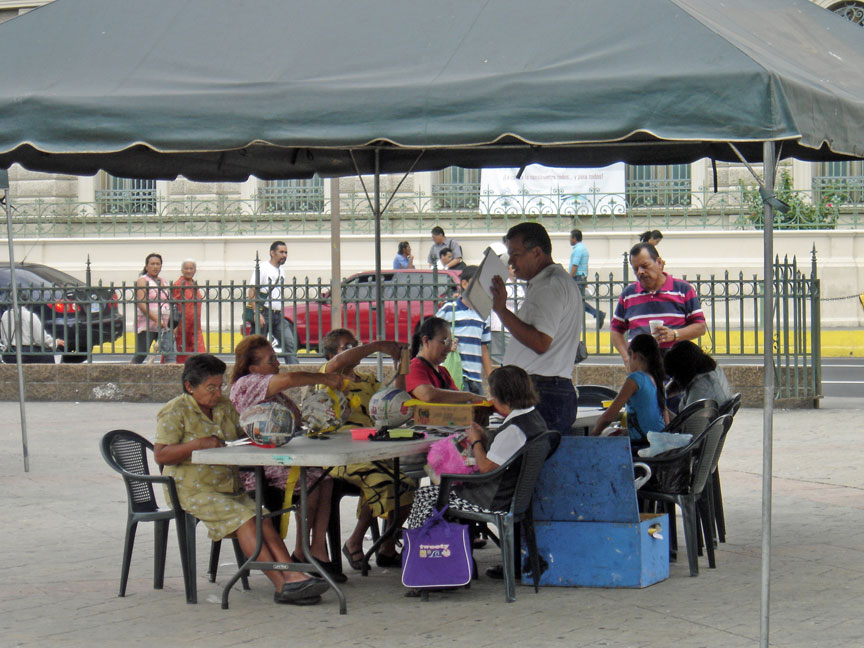
The 1986 San Salvador earthquake destroyed many government buildings and other
important structures, injuring and killing hundreds. Thousands of people were
displaced by the disaster and many found shelter in the ruins.
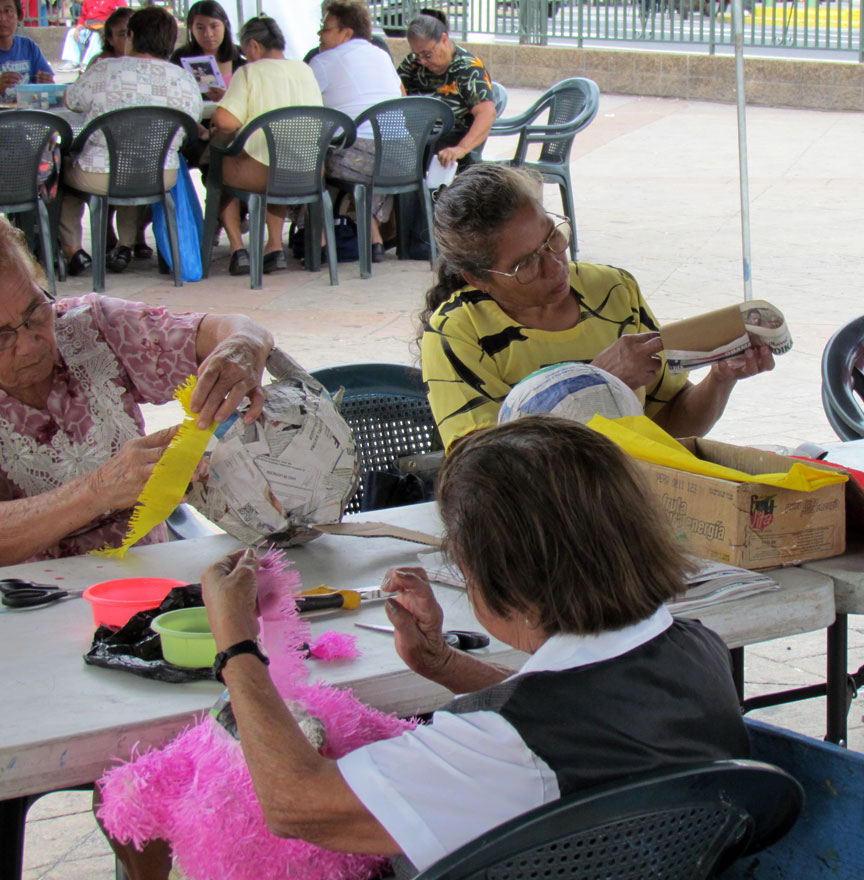
making piñatas
In 1986, Mayor Morales Ehrlich closed streets in the downtown area of the city for a large market which resulted in major traffic congestion affecting the area ever since.
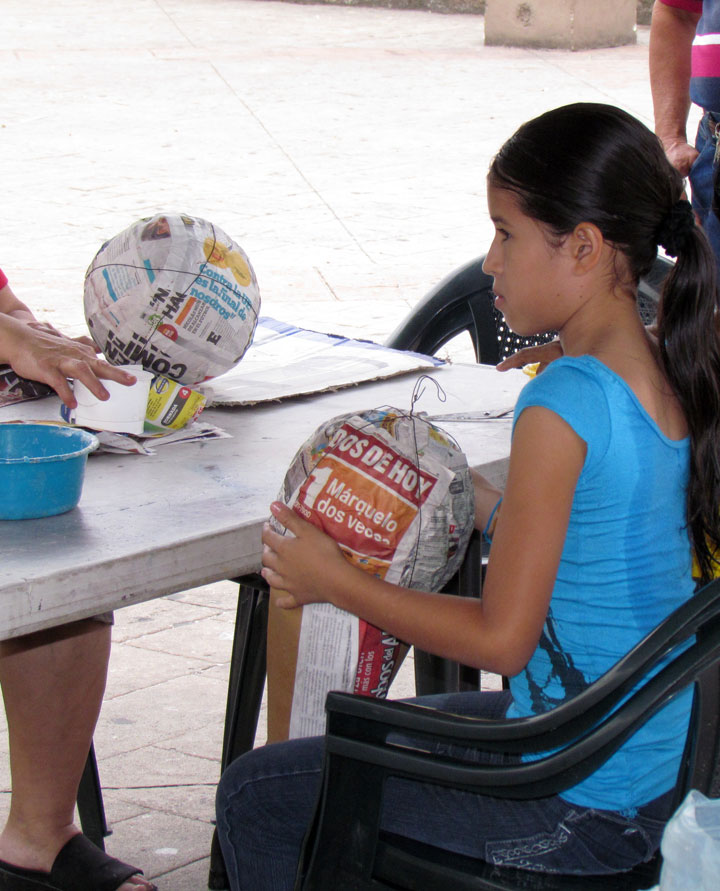
The Chapultepec Peace Accords were signed on Thursday, January 16, 1992, ending
22 years of civil war and were celebrated as a national holiday with people
flooding downtown San Salvador in Plaza Gerardo Barrios and in La Libertad Park.
Text from Wikipedia
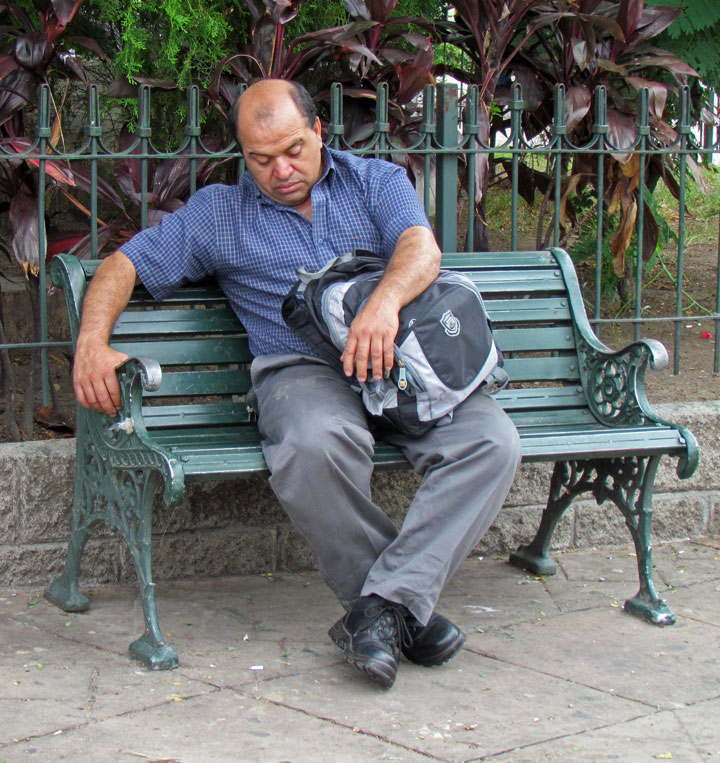

cathedral facade
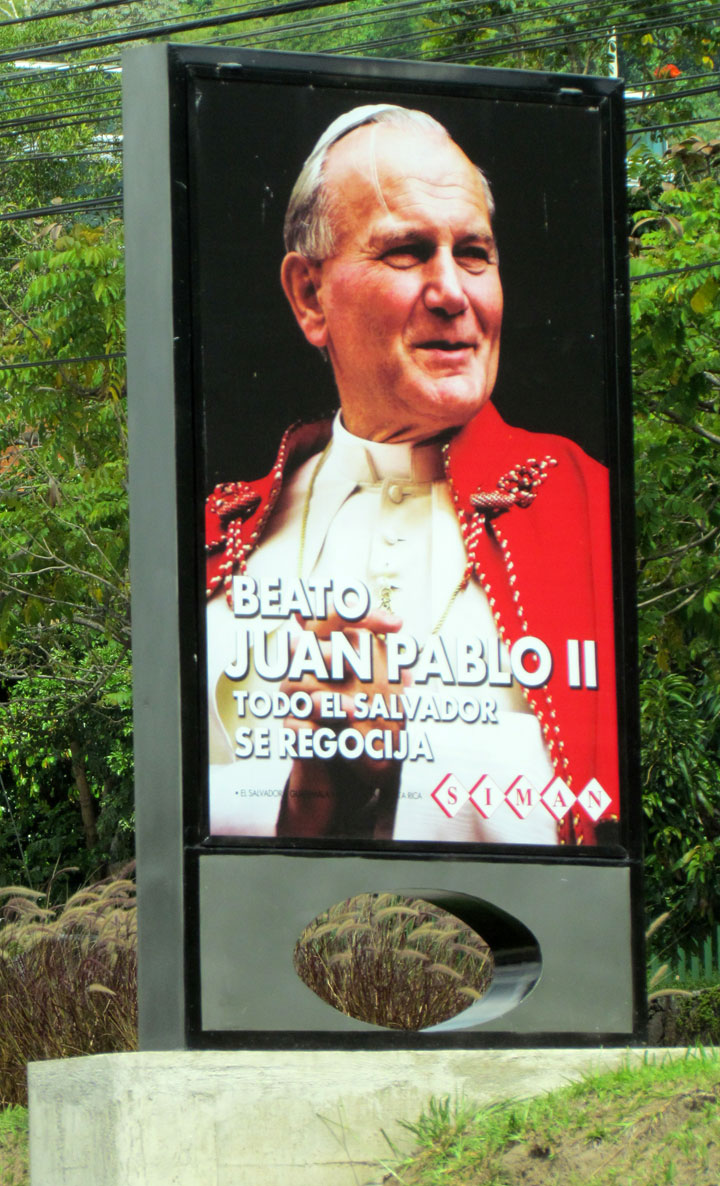
Pope's visit to El Salvador